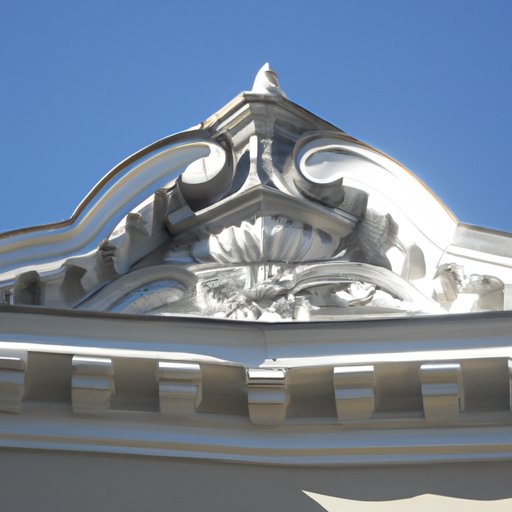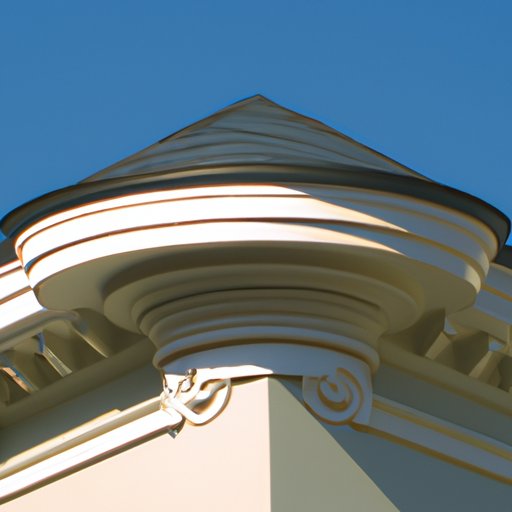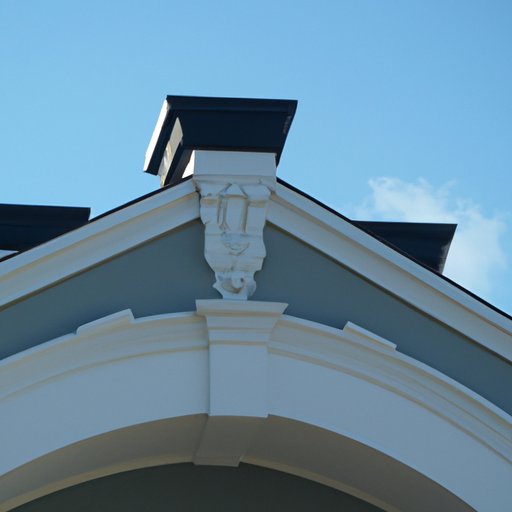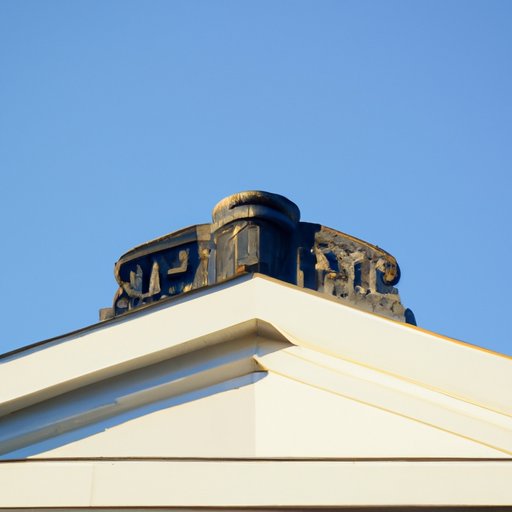Introduction
Pediments have been a popular architectural feature for centuries, but what exactly is a pediment? A pediment is a triangular or curved gable that is typically used as a decorative element on the front of a building. Pediments are often found on the entrance of a structure, and can be framed with columns, pilasters, or other elements. While pediments are often associated with classical architecture, they can also be used in modern designs. This article will explore the meaning and uses of pediments in architecture, from their ancient roots in classical Greek and Roman structures to their creative applications in modern buildings.

Exploring the Meaning and Design of Pediments
The use of pediments has its origins in ancient Greek architecture, where it was used to decorate temples and other public buildings. The design of a pediment is typically triangular or curved, and is usually adorned with sculptures or reliefs depicting people, animals, or mythological figures. The pediment was also used in Roman architecture, and its influence can be seen in many European buildings. In addition to its decorative purpose, the pediment was also used to provide structural support.
Design elements of a pediment include columns, pilasters, and entablatures. Columns are vertical supports that can be used to frame the pediment, while pilasters are flat projections that are used for decorative purposes. Entablatures are horizontal structures that are placed above the columns and pilasters to complete the pediment’s design. These elements can be made from a variety of materials, including stone, wood, and metal.
There are two main types of pediments: open and closed. An open pediment is characterized by a curved or pointed top, while a closed pediment has a flat top. Open pediments are typically used for decoration, while closed pediments are used for structural support. Both types of pediments can be used in a variety of ways, depending on the design of the building.

How Pediments Enhance Architectural Structures
Pediments are often used to create visual balance in a building. When placed at the entrance of a structure, they can draw the eye upward, creating an aesthetically pleasing effect. Pediments can also be used as a focal point, drawing attention to the entrance and other features of the building.
In addition to providing visual appeal, pediments can also be used to create a sense of grandeur. Pediments can be used to create a larger-than-life effect, making a building seem more imposing and impressive. This can be especially effective when used on large public buildings such as courthouses or government buildings.
The Significance of Pediments in Classical Architecture
Pediments were first used in classical Greek architecture, where they were used to decorate temples and other public buildings. The pediment was often adorned with sculptures or reliefs depicting people, animals, or mythological figures. The pediment was also used in Roman architecture, and its influence can be seen in many European buildings.
The Greek pediment was typically triangular in shape, while the Roman pediment was more curved. The Roman pediment was often decorated with sculptures or reliefs, and its influence can be seen in many European buildings, including churches and cathedrals. The use of pediments in classical architecture is still evident today, and can be seen in many modern buildings.

Creative Uses of Pediments in Modern Buildings
Pediments are no longer limited to classical designs, and can be used in a variety of ways in modern buildings. Contemporary pediments can be seen in residential and commercial settings, and can be used to add a touch of sophistication to any structure. Pediments can also be used in creative ways, such as framing windows or adding a unique accent to a building’s facade.
Architects have also used pediments in creative ways, such as combining different styles of pediments or using them to create a dramatic entrance. Pediments can also be used in combination with other elements, such as columns or arches, to create a unique and eye-catching design.
Conclusion
Pediments have been a popular architectural feature for centuries, and their use has evolved over time. Pediments have their origins in classical Greek and Roman architecture, but can also be used in modern buildings. Pediments can be used to create visual balance, add a sense of grandeur, or serve as a focal point. They can also be used in creative ways, such as framing windows or combining different styles of pediments. Whether used for structural support or decorative purposes, pediments continue to play an important role in architecture.
(Note: Is this article not meeting your expectations? Do you have knowledge or insights to share? Unlock new opportunities and expand your reach by joining our authors team. Click Registration to join us and share your expertise with our readers.)
